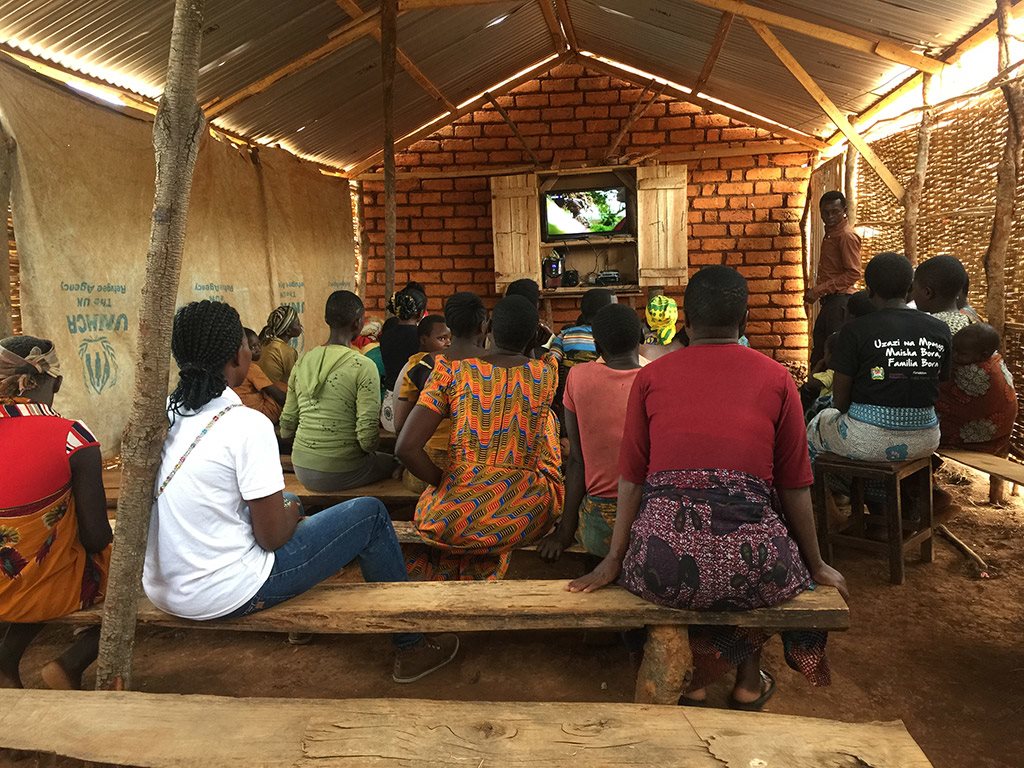Changing the way we teach financial literacy
Packed in a small video banda in Kigoma, Ezera was watching a movie during a free screening when suddenly the movie cut and an ad on saving popped up. “I used to save by putting money in a kibubu, but after watching that video I will consider using a VICOBA,” she says. Such was the goal of our financial literacy project in Kigoma – to encourage the adoption of positive, and more diverse, financial behaviours in Kigoma Region.
Through an intensive concept development phase that included audience consultations, Peripheral Vision International (PVI) and TBWA\Khanga Rue Media, with support from UNCDF Tanzania, developed a series of videos on topics ranging from saving to setting up a mobile money account. These videos were then embedded onto licensed films, Fatuma and Tunu, that allowed us to disseminate key financial literacy messaging to rural populations, with a reach of over 1800 people. The videos were distributed on DVD throughout Kigoma, both in refugee camps and in communities that neighbour them.
These videos have been developed as a material to support financial inclusion and financial and digital literacy across the Kigoma Region, both in refugee camps and in the nearby host communities. UNCDF supports local partners Danish Refugee Council (DRC), International Rescue Committee (IRC) and Good Neighbors Tanzania (GNTZ) in a savings-led approach, in which savings groups are central to building good money management skills, providing financial education, and eventually linking beneficiaries to safe and accessible formal financial services. (See our blog for more information on UNCDF’s work in Kigoma.)
Some of our key learnings from the recent media distribution were:
- Barbershops, buses and beauty salons are great locations for our financial intervention messaging as they have huge daily audiences comprised of both men and women. Plus, they are ubiquitous in many regions across Tanzania.
- The majority of rural audiences have local satellite cable decoders such as Azam or Zuku that have flash ports. Therefore, an option for future distribution would be to embed our videos on a flash rather than a DVD.
- Additionally, the owners of the locations we selected for the first distribution, such as bars and hotels, let us know that their patrons tend to prefer music or TV series rather than films. Going forward, licensing local music videos or TV series could help in the dissemination of our videos.
Over the course of the project, we were able to hold a total of four sponsored screenings with over 150 people – the majority of whom were women – and distributed 350 DVDs throughout the Kigoma Region. From our first experience with this type of “edutainment” project in Kigoma, we learned some important lessons as well as verified that videos are a fun and engaging way to reach a broad audience. We see exciting potential in this method as a means to spread the adoption of financial literacy messaging across Tanzania.
